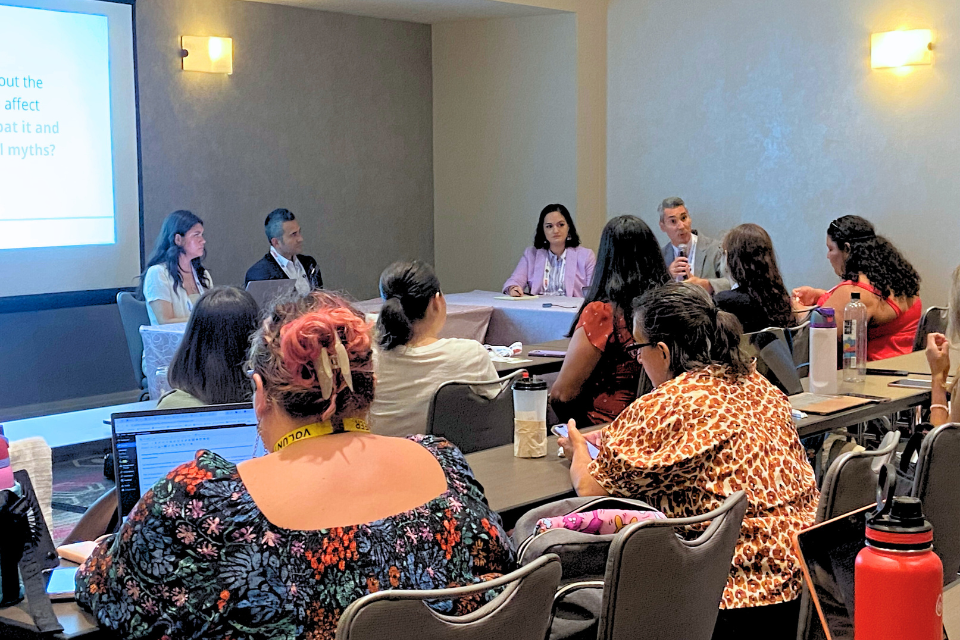Prescription drug prices in the United States are among the highest in the world, and for older adults and people with limited incomes, increasing costs can lead to difficult decisions and fatal outcomes. No one should have to choose between buying food and taking their medication, but these decisions happen every day in households throughout Connecticut. This is unacceptable.
In a recent AARP survey of Hispanic/Latino likely voters age 50 or older, 78% of respondents said they take at least one prescription medication on a regular basis, and 83% say they are concerned about the cost of their medications. In that same survey, 32% of respondents said they did not fill a prescription provided by their doctor because they did not have the money to pay for it, and 27% said they have cut back on food, fuel, electricity or other necessities in order to pay for their medication.
At a time when many issues are polarizing, there is strong bipartisan support for policies that will lower prescription drug prices. For example: 93% of older voters (regardless of party affiliation) favor proposals that will make it easier for generic drugs to come to market; 82% favor a cap on out-of-pocket costs for prescriptions; and 81% support allowing U.S. consumers to safely purchase prescription drugs from other countries.
Here in Connecticut, all three of these policy proposals are on the table for the 2020 legislative session. H.B. 5366, An Act Concerning the Cost of Prescription Drugs, includes provisions that would cap monthly out-of-pocket prescription drug costs at $250; allow Connecticut pharmacies to import less expensive prescription medication from Canada, and penalize pharmaceutical companies that enter into “pay-for-delay” deals in which brand-name drug companies pay their generic competitors to not bring drugs to market. S.B. 1, which has strong bipartisan support, would cap the price of insulin at $50 for a 30-day supply. It would also cap the monthly cost of noninsulin diabetes medication at $50 and the monthly cost of diabetic supplies at $100.
The rising cost of insulin has drawn attention and outrage in recent years, and rightly so. According to a report from Business Insider, “in 2009, the list price for a 10-milliliter vial of Humalog, a fast-acting insulin made by Eli Lilly, was about $93. Today it costs closer to $275. Similarly, Novo Nordisk’s fast-acting insulin Novolog cost almost $93 for a 10-milliliter vial in 2009. Today, it costs about $290.”
Insulin is not the only life-saving prescription medication to increase in price in recent years. In 2018, the retail prices for 265 widely used brand name prescription drugs increased by 5.8%. This increase was double the rate of inflation for the year. These price increases are difficult for individual consumers, but they also cost taxpayers money – an analysis by AARP’s Public Policy Institute found that Medicare spent an extra $110 billion in recent years just on drug prices that exceed general inflation.
Lower prescription drug prices could save lives, improve health, and prevent people from having to choose between medication and basic necessities. Tell your legislators that NOW is the time to lower prescription drug prices: CONNECTICUT RESIDENTS NEED LOWER RX PRICES
Are you interested in learning more about prescription drug prices and what elected officials are doing in Connecticut to lower costs for consumers? Join AARP, CTLN, the CT Library Association, Identidad Latina, and legislators for a FREE forum at the New Haven Public Library on Saturday, March 21st from 10:30am – 12:30pm. Free coffee and a light breakfast will be provided. Register today: Listening Tour
Anna Doroghazi, Associate State Director – Policy and Advocacy, AARP CT



